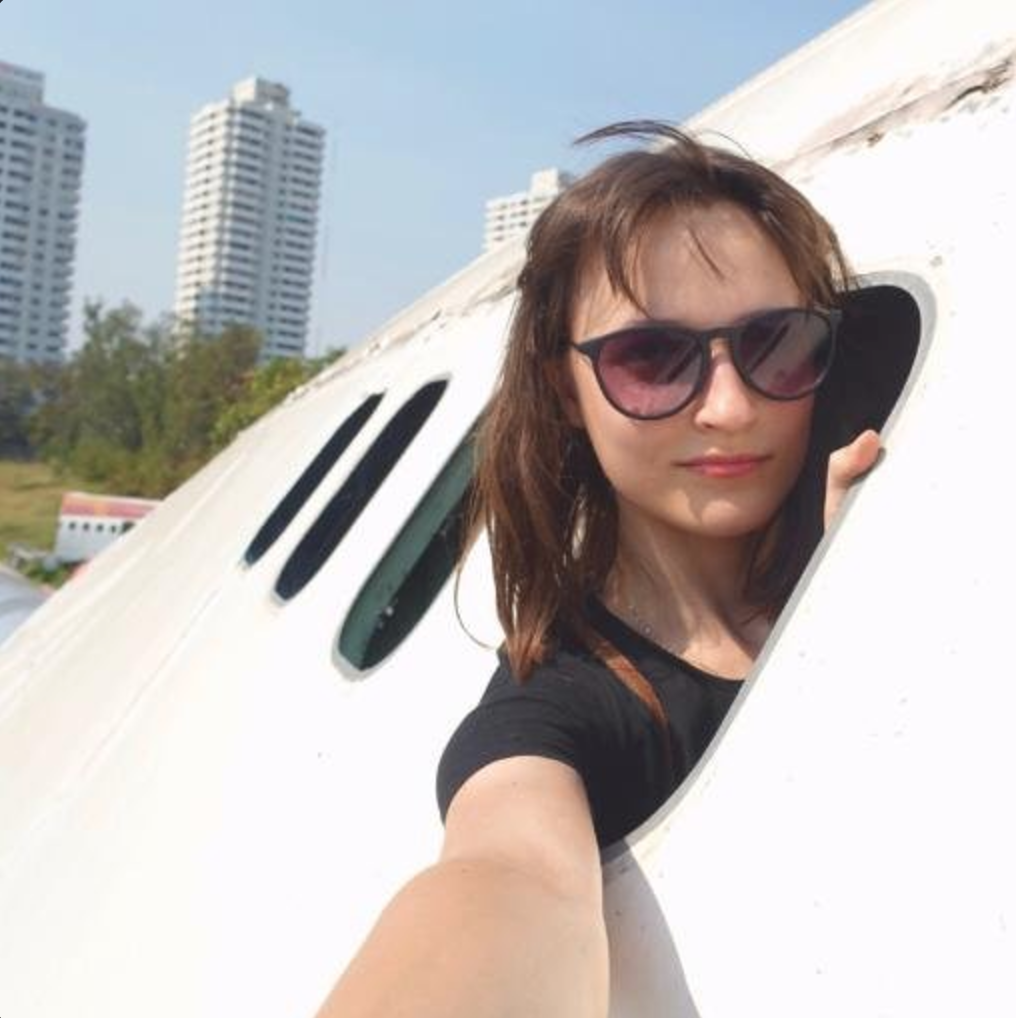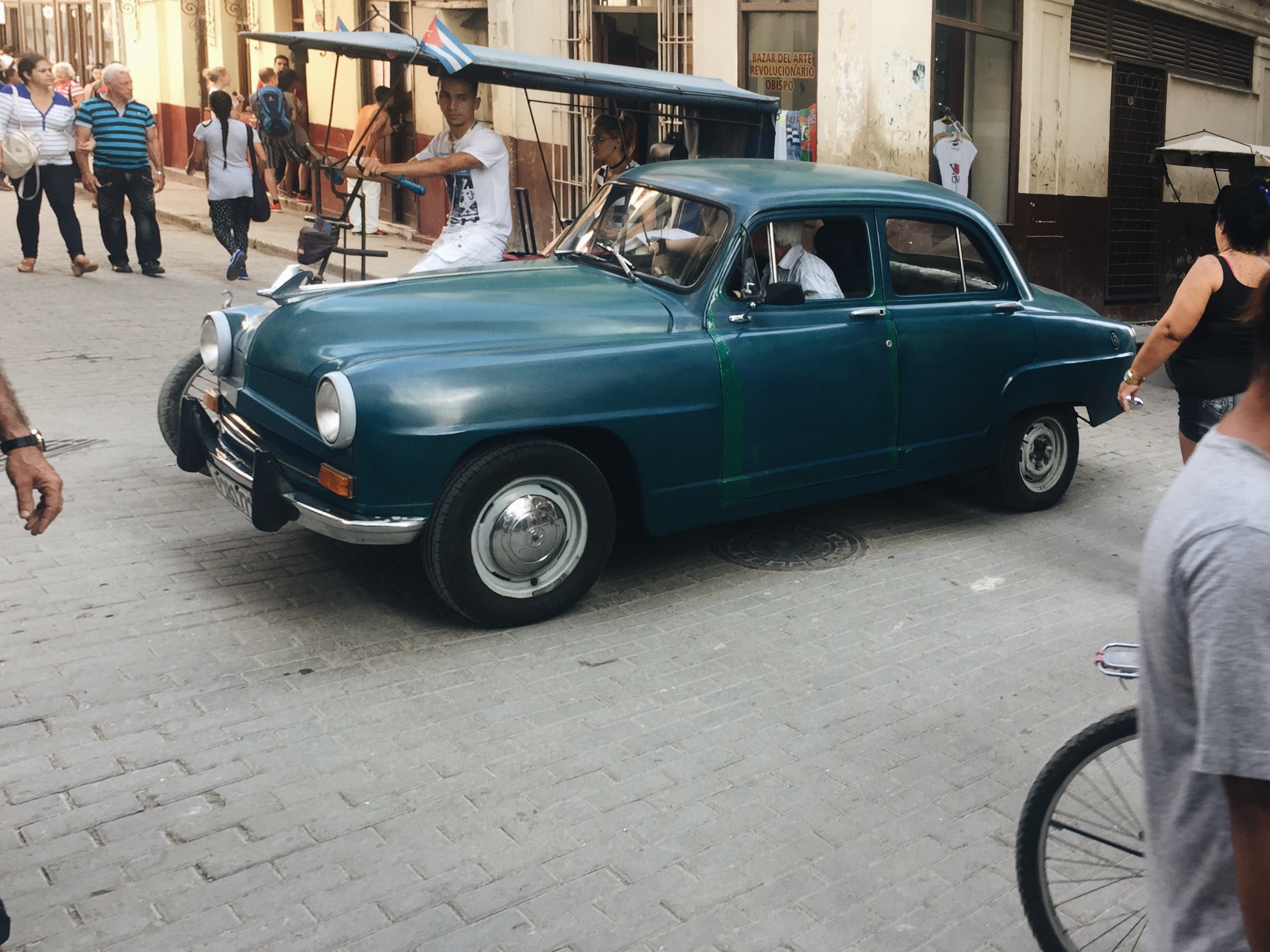EPISODE 10: CUBA
After being cut off from the US in the 1960s, Cuba became a travel relic. Now that it's slowly opening up, Americans are flooding the island for the first time. But Cuba is unlike any place else in the world; there are certain things American travelers need to know before visiting. Press play to find out some essential Cuban travel knowledge, and check out the article below.
Brief History
In 1961, during the height of Cold War tensions, the United States cut diplomatic ties with the Cuban government. They restricted trade and commerce between US businesses and Cuba, as well has prohibited Americans from spending money there.
For the last 50 years, Americans faced a $250,000 fine and 10 years in US prison for spending money in Cuba. Technically, it couldn't be made illegal to go to Cuba, so instead they made it illegal to spend money there. Although the law was rarely enforced, it was still difficult to travel to Cuba since there were no direct commercial flights from the US.
In 2015, then President Obama announced that the US would reestablish diplomatic relations with Cuba. By the summer of 2016, the first commercial flight from the US, landed in Cuba. Today, more than 8 airlines fly direct to Cuba everyday.
Taxis
Cubans have a lot of different ways of making money. One very lucrative way is to drive a cab. Taxi driving is one of the best paying jobs in Cuba.
Most Cubans earn between 20 to 200 dollars a month, but just one cab fare from the Havana Airport to the city of Havana can pay really well.
"A taxi from the airport to old Havana. It was between 25 to 30 Pesos," said, travel and beauty blogger Andreea Christina, who runs SimplyAndreea.com
These pesos are worth as much as dollars (before taking exchange rates into account), so a cab driver can earn in one ride, what some Cubans make in an entire month.
Frankencars
After the US Trade Embargo in 1961, Cubans lost access to the US auto market. Instead Russian cars were available, but they were rationed, so there weren’t that many for sale. The only way to buy a new car was through the government, but taxes for new vehicles were extremely high. Coupled with so little income, Cubans couldn’t afford new cars for decades. Instead they repaired their old ones over and over.
Some of these cars have parts from four or five different vehicles, giving them the nickname 'Frankencars.' Some of them use boat engines or even lawn mower engines to keep them on the road. One car I rode in looked like it was from the 1950s, but the steering wheel said 'Toyota' on it and the seats were couch cushions.
Most of these cars operate as taxis. In Old Havana you’ll find a lot of the nicer ones that look fancy and have shiny paint jobs. Those are more expensive to ride in.
"But if you get a really shitty one, with the not so good paint job, with the seats in the back that are bouncing with every pot hole, then it’s fine." Viatkin said. "It’s just a regular taxi."
These taxis are called Collectivos. The fare is really cheap, about 80 cents, but don’t expect them to have any safety features like airbags.
"I’ve never seen a car with a seat belt in Cuba, never," Viatkin said.
Getting into pretty much any car in Cuba is going to have its risks.
Many Cubans are dependent on their collectivos for income, so cars are very valuable here. Families will even pass down their one car through several generations. To give you an idea of how important these cars are, I spoke with Youtube Vlogger Elizabeth Viatkin. She told me about a conservation she had with one of her cab drivers.
"This taxi driver we had, bought this car, it was like a 1996 Peugeot, that he bought already ten years used. He bought it in 2006. And he bought it for 30,000 CUCs, but someone is offering him 40,000 CUCs. I was telling him, why don’t you sell it? He said, 'how am I going to live without the car? That’s my livelihood.'"
Havana Streets
I spent my first week in Havana, in an area called El Cerro. It’s a residential neighborhood with a lot of foot and vehicle traffic. In most of Havana, it feels like people are always heading somewhere, it’s a very busy city. After work, locals spend a lot of time outdoors, either sitting in from of their homes, or hanging out on a corner talking. The culture is very inclusive and the people are really friendly.
Old Havana
My favorite place in Havana is an area called Old Havana, it’s where the city was first founded in the year 1515. Some of the buildings are hundreds of years old and you can find a lot of museums and restaurants here.
"It’s close to everything and it’s very very walkable, and for a girl, it’s very safe," Christina said, "You know, it’s more lit up, close to many restaurants. I think for being comfortable, I would definitely do old Havana,'cause it’s easier. That’s where the hotels are and the wifi is easy to find."
Wifi and internet
Easy-to-find wifi is a huge perk when you’re in Cuba. There’s currently no data service for cell phones so you won’t be able to surf the web on your phone without wifi.
You’ll know when you’re near a wifi hotspot when you see at least a dozen people looking at their smart phones. These are called wifi parks. If you want to use the internet here, you’ll need to buy a wifi card with a scratch off code and a password. They’re called Etecsa cards and will cost about 2 to 6 pesos, depending on how many hours of wifi the card has.
Etecsa cards
Most cards have an hour worth of internet, but it can be a hassle using them. I was get kicked off of the network many times and it could take up to several minutes to even connect.
The place where I was staying wasn’t near a wifi-park, so I’d have to set an hour of my day aside to travel to the park.
"So essentially the internet was more of an activity than something you were always connected to." according to Youtube Travel Vlogger, Jon Barr.
Barr was just in Cuba, traveling and filming for his channel.
"I would find time in the evening if I had nothing better to do," he said. "I think that internet use is one of the biggest frustrations for most people I’ve met that have gone to Cuba. At first it’s liberating and then after a while it gets pretty annoying."
But limited access to the internet can have its perks.
"When you don’t have a smart phone and the internet isn’t as important in your life, I think community relations is a little bit different, I think neighbors are more friendly," Barr said. "I would walk down the street at night and the people who recognized me would invite me over. I felt like the community was pretty tight-knit because they weren’t distracted by other things."
This sort of tight-knit community probably helps to keep Cuba very safe. I’ve traveled to many places in the world and despite how economically poor Cuba is, it’s the safest place I’ve been.
Safety
"It’s so safe, it’s amazing," said Viatkin. "We’re walking around at night through really dark alleys and you see five young guys sitting around looking at you, but you don’t ever feel unsafe. In any other country I would think, 'am I about to get robbed?' as the very obvious tourist in the dark alley somewhere. Over there that thought doesn’t even cross your mind. It’s all safe."
Barr felt the same way about safety in Cuba, and had his own take as to why it’s safe, "With communism there, nobody owns guns except for the military or the police and not a lot of wage disparity. So a lot of the reasons for street crime in other countries, as far as someone with lower income needing it, or a lot of gun use in the United States, those reasons for crime don’t really exist."
I’ve also heard from locals that Cuban police are really strict about crime against travelers. One local told me a story about two tourists who were kidnapped in the town of Viñales, around eight years ago. The kidnappers held them overnight and raped them. The next day they were dropped off in town and the kidnappers drove away. The tourists went immediately to the police station, and the police were stunned that this had happened to them. This sort of crime was so rare that the Viñales police called all the surrounding police stations to activate a search for the criminals. The cops went door to door searching for clues and suspects. Within 24 hours both men were caught and identified by the tourists. The criminals were both executed that same day.
The Cuban who told me this story told me that Viñales is a small town, dependent on tourists and that they couldn’t afford having tourists getting kidnapped in their community and ruining their reputation.
That story is rare and also unverified, but the takeaway is: Cubans are very serious about crime. So you’ll generally be very safe there.
The Money situation
Credit and debit cards, issued by America banks, don't work in Cuba. Not at any stores, ATMs, hotels or banks. Not even at the airport.
"I heard stories of people who didn’t factor this in and got screwed over, not having money or having to get money wired somehow," said Barr.
He helped explain the unique currency exchange situation for Americans in Cuba.
"There’s a ten percent penalty for using US dollars at an exchange house," Barr said. "I went for two weeks. For me it made sense to go from US dollars to Canadian."
Barr exchanged his US dollars for Canadian dollars, before going to Cuba. The currency exchange fee is around 3%; exchanging Canadian Dollars to Cuban Pesos was another 3% fee. In total, it cost him 6% in fees to exchange US dollars into Canadian dollars, and then into Cuban Pesos. This is still cheaper than exchanging US dollars directly into Cuban pesos. That will cost you the exchange fee, plus the ten percent penalty, totaling 13%.
Exchange Booths
Currency exchange locations are called either, Casa de Cambio or Cambio de Moneda.
Make sure to count your bills one by one, in front of the person at the booth, so that you can both see how much money you're putting down. There are countless stories online about travelers in Cuba getting ripped off at these places.
At the airport in Havana, I had the first of many 'under the table experiences'. Encounters where local Cubans conduct business that was in some way, not legal.
When I arrived to the exchange booth there was no one behind the counter. A police officer standing nearby asked me what I had to exchange (I still had some US dollars on me that I forgot to exchange earlier). The officer told me I should speak to a lady standing near the booth. When I approached her she said she could offer me a US dollar exchange rate for 10% instead of the standard 13%. We walked into a small office nearby and did the exchange. It felt a little sketchy, but the rate was better, so it's a win-win I suppose!
Only Bring Cash to cuba, lots of it
Since Americans can’t use their credit or debit cards in Cuba, you’re going to have to bring enough cash to last you the duration of your trip.
"I brought more than enough cash, I never ran into any money problems," Barr said.
It can feel a little sketchy traveling with that much cash on you, but right now there aren’t other options for Americans. One thing you should do, to avoid carry even more cash, is book your accommodations in advance. You can do this online, through Airbnb or other online booking sites.
Casa Particular
Cuba doesn’t have that many hotels, so you’re most likely going to stay at a Casa Particular.
"Casa Particulars are essentially a chance for any local to open up their homes to tourists, and basically you can tell it’s a Casa Particular because they have the blue cross on the outside," Barr said.
The Blue Sign
The blue sign you see above, indicates that this house rents rooms to travelers. You'll see these signs in every Cuban neighborhood.
Renting rooms to foreigners is a really new development in Cuba.
"Just maybe two years ago people were allowed to host people in their homes," said Viatkin. "It wasn’t like that a couple of years ago, but right now if you walk around Havana, you can see practically on every door, there’s this little sign, and you can knock on any door and they will just let you in."
They’ll let you in if they have availability, and you’ll find that the prices can range from 20-50 dollars a night. I’ve been to six different Casas in Cuba, and the quality can be pretty hit or miss, but all of them have the basics.
"The Casas are actually pretty strictly licensed," Barr explained. "You have to have running water, most of them have to have air conditioning too, 'cause most tourists aren’t going to go to Cuba without air conditioning. So they’re actually pretty tightly controlled by the government."
We've only scratched the surface of things you need to know about this fascinating island. Make sure to subscribe to the podcast for updates and stay tuned for the next episode.
Thanks for reading! If you like these facts and want to hear more episodes like this, leave us a review on iTunes.
Don’t forget to subscribe to the podcast and follow us on Instagram, Facebook and Twitter for updates.


























